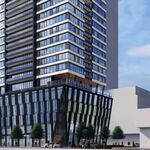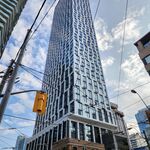S
socialwoe
Guest
Re: Subway plan
The subway actually wouldn't affect bus transit that much since the stops would be spaced a kilometre apart. Jane buses would still operate to serve the gaps. Since the subway's run by the TTC I suppose to connect with buses in YR, commuters would have to pay the local fare and vice versa much like VIVA operates today.
Yes making the downtown car free like London. The Queen Line along with or inclusive of jogs would make everywhere you'd want to go downtown accessible. Queen on the surface could become a greenspace, pedestrian friendly with whatever vehicular traffic bound for the core utilizing Richmond-Adelaide-Front.
I suppose that the york region transit would want the profits from busing up to those landmarks though, since i'd assume they will not get any money from subway fares
The subway actually wouldn't affect bus transit that much since the stops would be spaced a kilometre apart. Jane buses would still operate to serve the gaps. Since the subway's run by the TTC I suppose to connect with buses in YR, commuters would have to pay the local fare and vice versa much like VIVA operates today.
<hr></blockquote><!--EZCODE QUOTE END-->Does anybody else think that this development is not very significant, why was the downtown ignored?
Yes a subway line through downtown Toronto was due circa 1940s. How can no one care about the half million commuters suffering there but continually stretch the proverbial olive branch out to sprawlly, sparse suburbanites? I believe it's not because they want to ignore it, it's because they realize it'd cost too much. If done properly, a Queen St subway can cost anywhere from 5-8 billion dollars, not chump change. I shudder to think how the city would've developed had BD not been built and Queen was. I'm sure by now it'd snake around the Former City of Metro Toronto (Lakeshore to Eglinton) encompassing every node imaginable.
<!--EZCODE QUOTE START--><blockquote><strong><em>Quote:</em></strong><hr>If they really care about the environment, why not expand the subway line where it will truley help the environment by providing transit to where the majority of pe
Yes making the downtown car free like London. The Queen Line along with or inclusive of jogs would make everywhere you'd want to go downtown accessible. Queen on the surface could become a greenspace, pedestrian friendly with whatever vehicular traffic bound for the core utilizing Richmond-Adelaide-Front.




